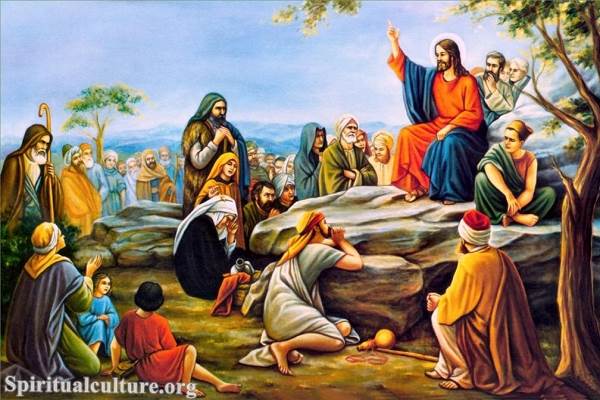The Eucharist lies at the very heart of Catholic life — a mystery so profound that even the angels gaze upon it with wonder. For Catholics, the bread and wine offered at Mass are not mere symbols or sacred rituals. They are transformed into something — or rather, someone — far more wondrous: the real and abiding presence of Jesus Christ.
But what exactly does “Real Presence” mean? And why does it matter so deeply to Catholic worship, identity, and spiritual life?
In this article, Spiritual Culture invites you to explore the soul of Catholic Eucharistic theology — not just as a doctrine, but as a transformative reality meant to shape how we live, believe, and love.
Understanding the Mystery of the Real Presence
The Real Presence: More Than a Metaphor
At the core of Catholic teaching is this bold claim: Jesus Christ is truly present in the Eucharist — body, blood, soul, and divinity. This is not a poetic metaphor or devotional exaggeration. It is a truth Catholics hold with reverent certainty.
The Language of Faith and Mystery
The term “Real Presence” signifies that Christ is really and truly present in the Eucharist — not merely in memory, not only symbolically, but substantially. It is a mystery that transcends human categories, yet is grasped by faith, nourished by love, and confirmed by centuries of Christian experience.
What Changes — and What Remains
Catholics believe in a process called transubstantiation, a term that means “a change of substance.” According to this doctrine:
- The substance of the bread and wine becomes the substance of the Body and Blood of Christ.
- The appearances (or “accidents”) — the taste, look, smell, and texture — remain unchanged.
This change is real, though invisible. What the senses perceive as bread and wine, the eyes of faith know to be the living Christ.
Biblical Roots of the Real Presence
The Words of Jesus at the Last Supper
The foundation of Catholic belief in the Real Presence lies in Jesus’ own words:
“This is my body, which is given for you. Do this in remembrance of me… This cup is the new covenant in my blood, which is poured out for you.”
— Luke 22:19–20
Jesus does not say, “This represents my body.” He says, “This is.” The Church has always taken Him at His word.
John 6: A Radical Teaching
In the Gospel of John, Jesus speaks even more boldly:
“Unless you eat the flesh of the Son of Man and drink his blood, you have no life in you.”
— John 6:53
When many of His disciples found this teaching too hard and walked away, Jesus did not soften or reinterpret His words. He let them go — indicating that He meant them quite literally.
How the Church Has Always Believed
Early Christian Witnesses
Far from being a later invention, the Real Presence was affirmed by the earliest generations of Christians.
St. Ignatius of Antioch (d. c. 110 A.D.)
He warned against those:
“…who abstain from the Eucharist and from prayer, because they do not confess that the Eucharist is the flesh of our Savior Jesus Christ.”
St. Justin Martyr (2nd century)
Described the Eucharist as:
“not as common bread and common drink do we receive these… but… the flesh and blood of that Jesus who was made flesh.”
These testimonies reveal a continuous belief: the Eucharist is not a symbol but a sacred reality, received with awe and devotion.
The Council of Trent: A Defining Moment
In response to Reformation-era doubts about the Eucharist, the Catholic Church reaffirmed her ancient belief at the Council of Trent (1545–1563):
“By the consecration of the bread and wine, there takes place a change of the whole substance… into the substance of the body and blood of Christ our Lord.”
This declaration wasn’t a novelty but a clarification of a long-held truth — the same truth proclaimed from the altar every time Mass is celebrated.
Why the Real Presence Matters Today
Communion: Not a Symbol, but a Sacrament
If the Eucharist were merely symbolic, then Holy Communion would be no different than a spiritual meditation. But if Jesus is truly present, then Communion becomes a profound encounter with the Living God.
A Personal Union with Christ
To receive the Eucharist is not simply to remember Christ — it is to be united with Him. St. Paul wrote:
“The cup of blessing that we bless, is it not a sharing in the blood of Christ?
The bread that we break, is it not a sharing in the body of Christ?”
— 1 Corinthians 10:16
Through this sacrament, Christ becomes intimately close — not only to our minds, but to our very bodies and souls.
The Eucharist and Catholic Identity
Source and Summit of the Christian Life
The Second Vatican Council called the Eucharist the “source and summit of the Christian life.” Every Catholic prayer, devotion, or mission finds its source in the Eucharist and leads back to it as its summit.
A Life of Eucharistic Living
Belief in the Real Presence is not just for Sunday — it is meant to shape how we:
- Treat others — with the same reverence we show the host
- Pray — with deeper longing to be in Christ’s presence
- Live — as “Eucharistic people,” broken and poured out in love
The Eucharist as a Sacrifice
Remembering the Cross, Re-presenting the Mystery
Catholics believe the Mass is not a new sacrifice, but the one sacrifice of Christ made present again:
“This is my body, given up for you.”
— Luke 22:19
The Eucharist is a memorial in the Jewish sense — not just a recollection, but a participation in the saving event. In the liturgy, time and eternity meet, and Calvary is mystically present on the altar.
The Reverence of Eucharistic Worship
Adoration: Gazing Upon the Mystery
Because Catholics believe Jesus is truly present in the consecrated host, the Eucharist is not only consumed — it is adored.
Eucharistic Adoration
In chapels and churches worldwide, Catholics kneel before the Blessed Sacrament exposed in a monstrance. This silent gaze is not empty — it is a heart-to-heart encounter with Christ.
The Sacred Silence
In a noisy world, Eucharistic adoration becomes a school of silence, humility, and love — a place where the soul listens more than it speaks.
Challenges to Belief — and the Call to Renewal
The Crisis of Faith in the Real Presence
Recent studies show that many Catholics struggle with understanding or believing in the Real Presence. This is not a doctrinal shift — it’s a pastoral challenge.
Why Does It Happen?
- Cultural skepticism about miracles
- Poor catechesis or formation
- A casual approach to liturgy and Communion
What Can Renew Faith?
- Better teaching on the meaning of the Mass
- Eucharistic reverence in practice — genuflection, silence, careful distribution
- Personal testimony and lived witness
Eucharistic Miracles: Signs for the Doubtful
Throughout history, there have been reported instances where the host has turned into visible flesh or blood — such as the Lanciano miracle (8th century) and more recent events in Poland and Argentina.
While not necessary to believe, these miracles serve as powerful reminders of what the Church proclaims in every Mass.
What This Means for You
Reflect and Reimagine
The Catholic teaching on the Real Presence is not merely a theological concept — it is a living invitation.
- To believe that Christ is truly with us
- To receive Him with awe and love
- To adore Him in stillness and gratitude
- To become what we receive — His body in the world
St. Augustine once said:
“Behold what you are; become what you receive.”
In the Eucharist, Christ offers not only His presence — but His very self. He waits for us not in abstract theology, but in the humble form of bread and wine.
May we never take this mystery lightly. May we come, kneel, and say with the saints:
“My Lord and my God.”





